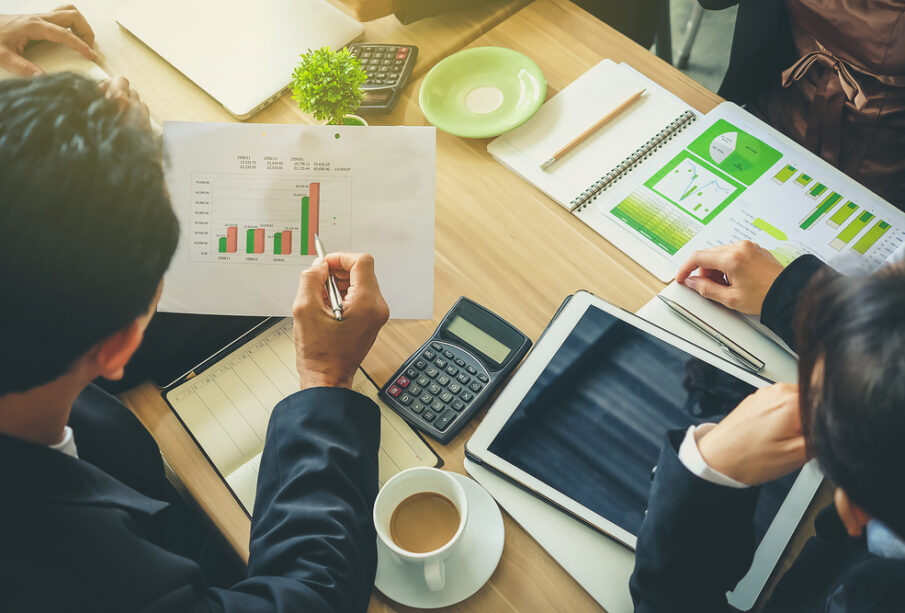Green is the New Gold: How Sustainability is Redefining Business Models in 2025

Introduction: A Strategic Shift, Not a Slogan
Sustainability in 2025 is no longer a corporate buzzword tucked into annual reports—it has become a transformative force guiding how businesses are structured, operate, and measure success. With growing environmental concerns, evolving consumer expectations, and increasingly stringent regulatory frameworks, businesses across all sectors are reengineering their models to prioritize ecological and social responsibility alongside profitability. The landscape of commerce is being reimagined, where purpose-driven innovation now fuels competitive advantage.
The Catalyst for Change: Why 2025 is a Pivotal Year
Several global forces have converged to make sustainability a non-negotiable business imperative in 2025:
-
Regulatory Escalation: Governments worldwide have enacted tougher climate policies, carbon pricing mechanisms, and ESG disclosure requirements, forcing companies to integrate sustainability into their core operations.
-
Consumer Activism: Today’s consumers are highly informed, value-aligned, and quick to shift loyalties. They expect brands to demonstrate real, measurable commitment to environmental and social causes.
-
Investor Pressure: ESG (Environmental, Social, and Governance) metrics now influence capital allocation. Institutional investors are divesting from non-compliant businesses and channeling funds toward green innovation.
-
Supply Chain Vulnerability: Climate disruptions and resource scarcity have made resilient, sustainable supply chains vital for operational continuity.
In this context, sustainability is no longer a side initiative; it is an essential pillar of modern business design.
Sustainable Business Models: From Concept to Core
Forward-thinking companies have moved beyond token sustainability projects. They are embedding environmental and social responsibility deep within their value chains, creating models that are both profitable and regenerative.
1. Circular Economy Models
The shift from linear to circular models is redefining product life cycles.
-
Design for Reuse: Products are engineered with modularity, repairability, and end-of-life recyclability in mind.
-
Reverse Logistics: Businesses now facilitate returns of used products for refurbishment, resale, or recycling.
-
Material Innovation: Companies are investing in biodegradable materials and closed-loop manufacturing systems to minimize waste and resource extraction.
Brands like IKEA and Patagonia have demonstrated that circularity can unlock new revenue streams while reducing environmental impact.
2. Carbon-Conscious Operations
Carbon neutrality has become a baseline expectation rather than a brand differentiator.
-
Net-Zero Commitments: Companies are setting science-based targets and transitioning to renewable energy sources across their operations.
-
Internal Carbon Pricing: Some businesses now apply a shadow price to carbon internally to guide investment decisions and evaluate environmental impact more accurately.
-
Green Supply Chains: From ethical sourcing to eco-efficient logistics, supply chains are being decarbonized at every level.
Tech firms, logistics giants, and manufacturers alike are leveraging carbon transparency to build trust and resilience.
3. Impact-Driven Innovation
Innovation in 2025 is increasingly aligned with planetary and social goals.
-
Eco-Products and Services: New product lines are being developed to solve sustainability challenges—clean energy tech, water-saving appliances, plant-based materials, and more.
-
Inclusive Business Models: Companies are building business structures that benefit underserved communities, creating jobs and access in emerging markets.
-
Data-Driven Sustainability: Advanced analytics and AI are being deployed to monitor, optimize, and report on sustainability performance in real time.
This innovation ethos not only addresses global needs but drives meaningful market differentiation.
Redefining Value: Profit Meets Purpose
In 2025, the definition of value has evolved. It is no longer measured solely by financial metrics but by an organization’s capacity to generate positive environmental and social outcomes.
Key Indicators of Value in the Sustainable Era:
-
Triple Bottom Line Accounting: Companies now evaluate performance through the lens of People, Planet, and Profit.
-
Integrated Reporting: Sustainability reporting is embedded within annual financial disclosures, providing stakeholders with holistic insights.
-
Stakeholder Capitalism: Business strategies increasingly prioritize the well-being of all stakeholders, not just shareholders—from employees to communities and ecosystems.
This redefinition of value has prompted a recalibration of priorities at the executive and board levels across industries.
Cultural Transformation: The Human Side of Sustainability
True sustainability requires more than operational change; it demands a shift in mindset and corporate culture.
-
Leadership Commitment: CEOs are expected to be climate-literate, ethically grounded, and transparent about sustainability goals and progress.
-
Employee Engagement: Workers are choosing to align with companies that share their values. Internal sustainability champions are driving grassroots change within organizations.
-
Cross-Sector Collaboration: Companies are partnering with NGOs, governments, and academic institutions to co-develop scalable solutions to systemic challenges.
This human-centered approach ensures that sustainability is not an isolated department but a shared responsibility.
Risks of Inaction: Falling Behind in a Sustainable Economy
While many organizations are advancing swiftly, those that lag are facing mounting risks:
-
Reputation Erosion: In a hyper-transparent world, greenwashing is swiftly exposed and penalized by consumers and watchdogs alike.
-
Regulatory Penalties: Failure to comply with emerging environmental laws can result in fines, trade barriers, and revoked licenses.
-
Capital Flight: Non-compliant businesses are being excluded from ESG investment portfolios, limiting access to funding.
-
Talent Drain: The best talent is increasingly drawn to purpose-driven organizations, leaving traditional models at a competitive disadvantage.
Inaction is not just environmentally irresponsible—it’s strategically untenable.
Looking Forward: The Future of Business is Regenerative
Sustainability in 2025 is not an endgame—it’s the beginning of a regenerative approach to business that seeks not just to reduce harm, but to restore ecosystems, uplift communities, and enable long-term prosperity.
Emerging Frontiers to Watch:
-
Biodiversity Metrics: Companies will soon be expected to measure and report their impact on biodiversity, not just carbon.
-
Nature-Based Solutions: Businesses will increasingly invest in ecosystems—reforestation, wetlands restoration, and regenerative agriculture—as part of their strategy.
-
Sustainable Digital Infrastructure: As data consumption grows, sustainable tech practices such as green coding, energy-efficient data centers, and low-carbon AI will gain prominence.
Conclusion: A Mandate for Bold Leadership
Sustainability is no longer a niche initiative—it is a strategic mandate shaping the future of commerce. In 2025, the most resilient, profitable, and admired companies are those that have woven sustainability into their DNA. They are redefining success, not merely by margins, but by their impact on the world.
The time for incrementalism has passed. As the climate clock ticks and societal expectations rise, bold, visionary leadership is essential. Businesses that embrace this challenge with authenticity, innovation, and courage will not only endure—they will lead the next era of global prosperity.














